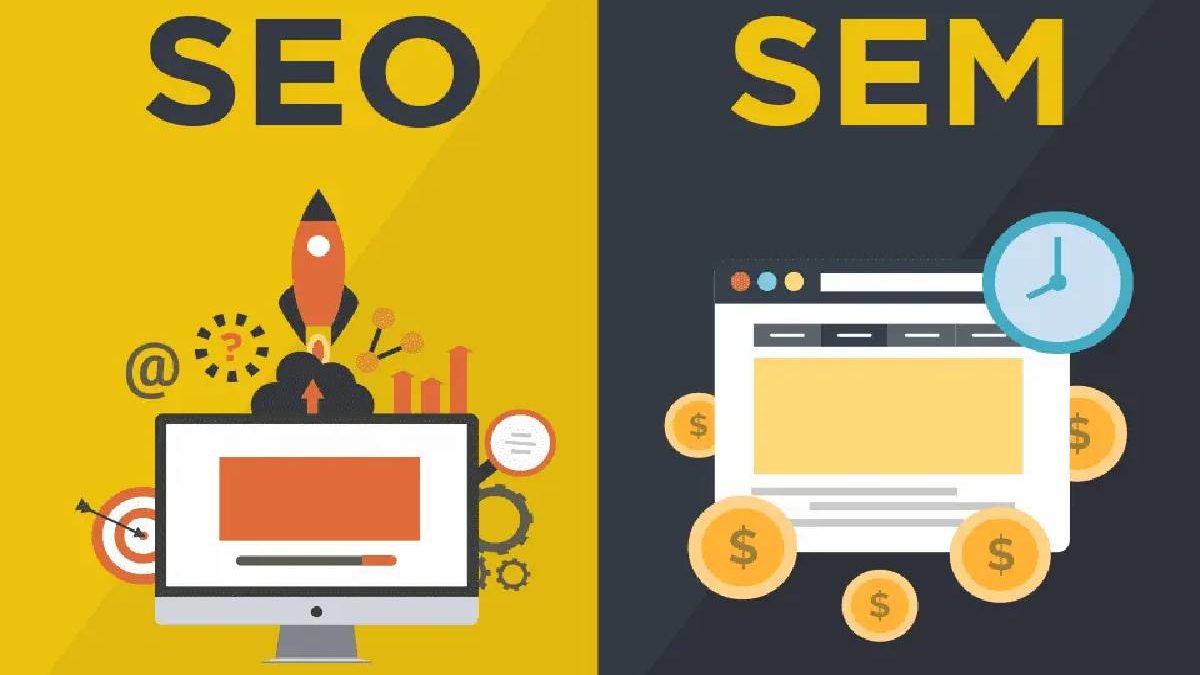Table of Contents
SEO vs SEM
The only difference is that SEO VS SEM. Here Search Engine Optimization (SEO) focuses on optimizing a website to get traffic from organic search results.
On the extra hand, Search Engine Marketing (SEM) aims to get traffic and visibility from organic and paid searches.
Main Features
SEO Overview
The SEO is the practice of repeatedly optimizing a website to rank in the organic, non-paid search engine results pages (SERPs).
However, Google uses 200+ ranking signals in its algorithm. So here is said, SEO can be alienated into four main subcategories on-page SEO, off-page SEO, technical SEO, and User Interaction Signals.
On-Page SEO: This is anywhere you optimize your website about keywords that your target customer searches for in Google, Bing, and different search engines. E.g., one on-page SEO best practice includes your crucial keyword in your name tag, meta description, and webpage URL.
Off-Page SEO: Off-page SEO is all about receiving trust and authority signals after other websites. However, it mainly involves building high-quality backlinks to your site. Nonetheless, Google may also use other off-page signs to size up your site’s authority, like E-A-T and social media input.
Technical SEO: Here’s where you type sure that Google and different search engines can crawl then index all of the sides on your website. Here, technical SEO also comprises things like making sure your pages load quickly rather than setting up your site architecture correctly.
Operator Interaction Signals: The way users interact with your site helps Google determine if your page is a good match for someone’s search.
E.g., if your page has a high bounce rate, that could signify that your page isn’t giving somebody the answer to their query. Then if Google considers your page a bad fit for that keyword, they can drop your rankings down a little bit. Or entirely off of the first page overall.
SEM Overview
Remember: SEM is a high-level term that includes SEO. So all that I just outlined above for SEO also applies to SEM. Nonetheless, in addition to SEO, SEM also includes PPC. Then PPC is a field with its own set of features, best practices, and more.
Bidding: Whether you use Google Ads or Bing Ads, paid ads in the hunt are all about bidding. By PPC, you bid on a specific keyword. Then when someone searches for that keyword, your ad shows up.
The rankings of the ads are typically proportional to how much somebody is bidding. So if you’re the highest bidder, you’ll seem above all of the other ads.
Then when somebody clicks on your ad, you pay whatever amount you bid. When someone clicks on your ad, the amount that you pay is known as cost per click (CPC).
Quality Score: Quality Score is a tremendously important Google Ads metric. It’s Google’s way of figuring out if your ad is a good match for whatever someone’s searching for.
Google calculates Quality Score founded on a combination of click-through rate, the excellence of your landing page, and your Google Ad account’s general Quality Score. Then if your ad has a high-Quality Score, you’ll get a reduction on each click.
Ad Copy: Here, writing compelling ad copy is a HUGE share of responsibility well with PPC. Why? Great ad copy=high CTR. Then a CTR means a good Quality Score, which means that you pay less for the same click.
The opposite is also true. If your copy doesn’t drive individuals to click, your Quality Score will suffer. Then your PPCs will start to get super expensive.
Ad Groups and Account Management: Here’s anywhere you use the data in your Google Ads account to optimize your ad spend.

